Samyang 12 mm f/2.8 ED AS NCS Fish-eye
3. Build quality
In the photo below the Samyang 2.8/12 is positioned next to another diagonal fisheye designed for full frame – the Zenitar 2.8/16.
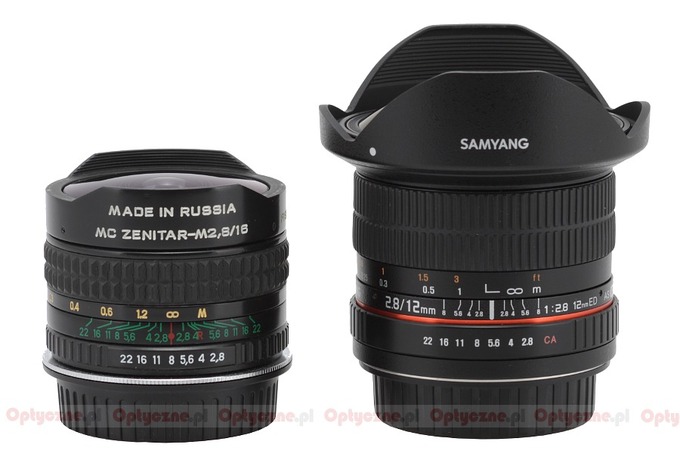 |
Please Support UsIf you enjoy our reviews and articles, and you want us to continue our work please, support our website by donating through PayPal. The funds are going to be used for paying our editorial team, renting servers, and equipping our testing studio; only that way we will be able to continue providing you interesting content for free. |
- - - - - - - - - - - - - - - - - - - - - - - - - - - - - - - - - - - - - - - - - - - - - - - -
The tested lens starts with a metal mount, surrounding a rear element, 20 mm in diameter, positioned on the same level as the mount and set in black plastics. It moves but its movement range is very small, almost imperceptible.
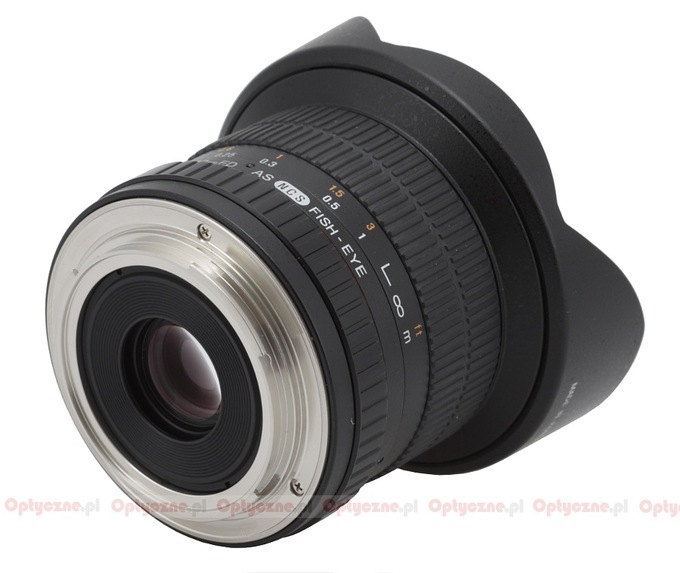 |
The first part of the proper body is a narrow, immobile ring behind which you can find an aperture ring, 8 mm wide. That ring is a joy to use – comfortable and well-damped. It also must be mentioned that the Canon mount version of the lens doesn’t feature any contacts which might allow the lens to communicate with the camera body and you - to control the aperture from the camera. The aperture value can be changed every 0.5 EV step and the EXIF file of a photo includes neither the focal length of the lens nor aperture value. The contacts are available in the Nikon F mount version and then the aperture can be changed using the camera controls every 0.3 EV step.
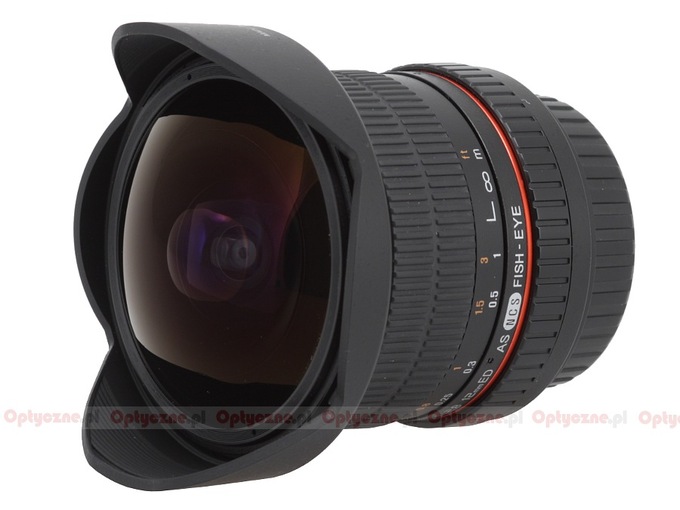 |
The next part is a narrow, immobile ring with a red stripe above which you can see the name and the parameters of the lens and depth of field markings by f/8.0, f/5.6, f/4.0 and f/2.8 apertures. Further on there is a manual focus ring. It is relatively wide (28 mm) and rubber ribbing, very pleasant to the touch, takes most of it. Under the ribs you find a distance scale expressed in feet and meters. The ring works evenly but, in our opinion, it has too much slack. Running through the whole scale takes a turn through an angle of about 120 degrees. It is a decent value, allowing you very precise settings especially with such a short focal length and a deep depth of field.
Behind the manual focus ring the lens turns smoothly into a huge, removable, petal-type hood. It surrounds a front element with an impressive diameter of 65 mm. You cannot attach any filters here - a standard when it comes to fisheye lenses.
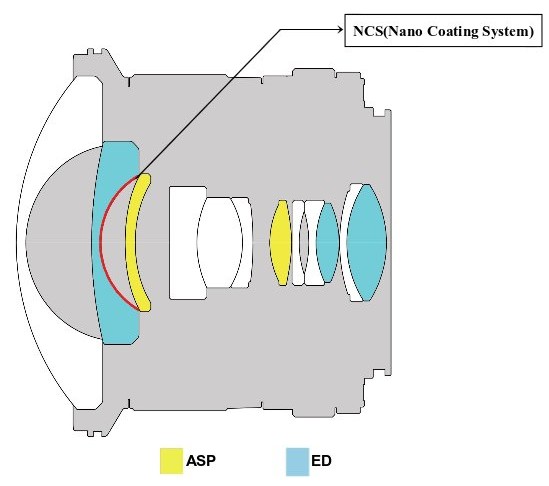 |
The optical construction of the tested lens consists of 12 elements positioned in 8 groups. There are three low dispersion ED glass elements and two aspherical ones among them. The Samyang 12 mm f/2.8 ED AS NCS Fish-eye is the third device of that producer (along with the 10 mm f/2.8 and the 12 mm f/2.0) with a nanocrystal anti-reflective NCS layer used with the UMC coatings. Inside there is also an aperture with seven diaphragm blades which can be closed down to f/22.
Buyers get both caps and a soft pouch in the box.
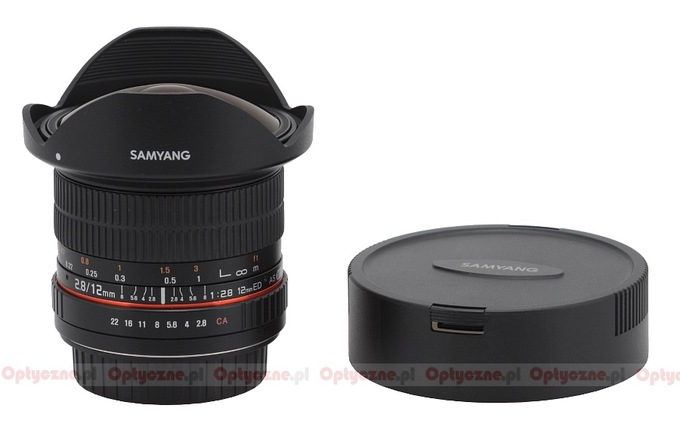 |






